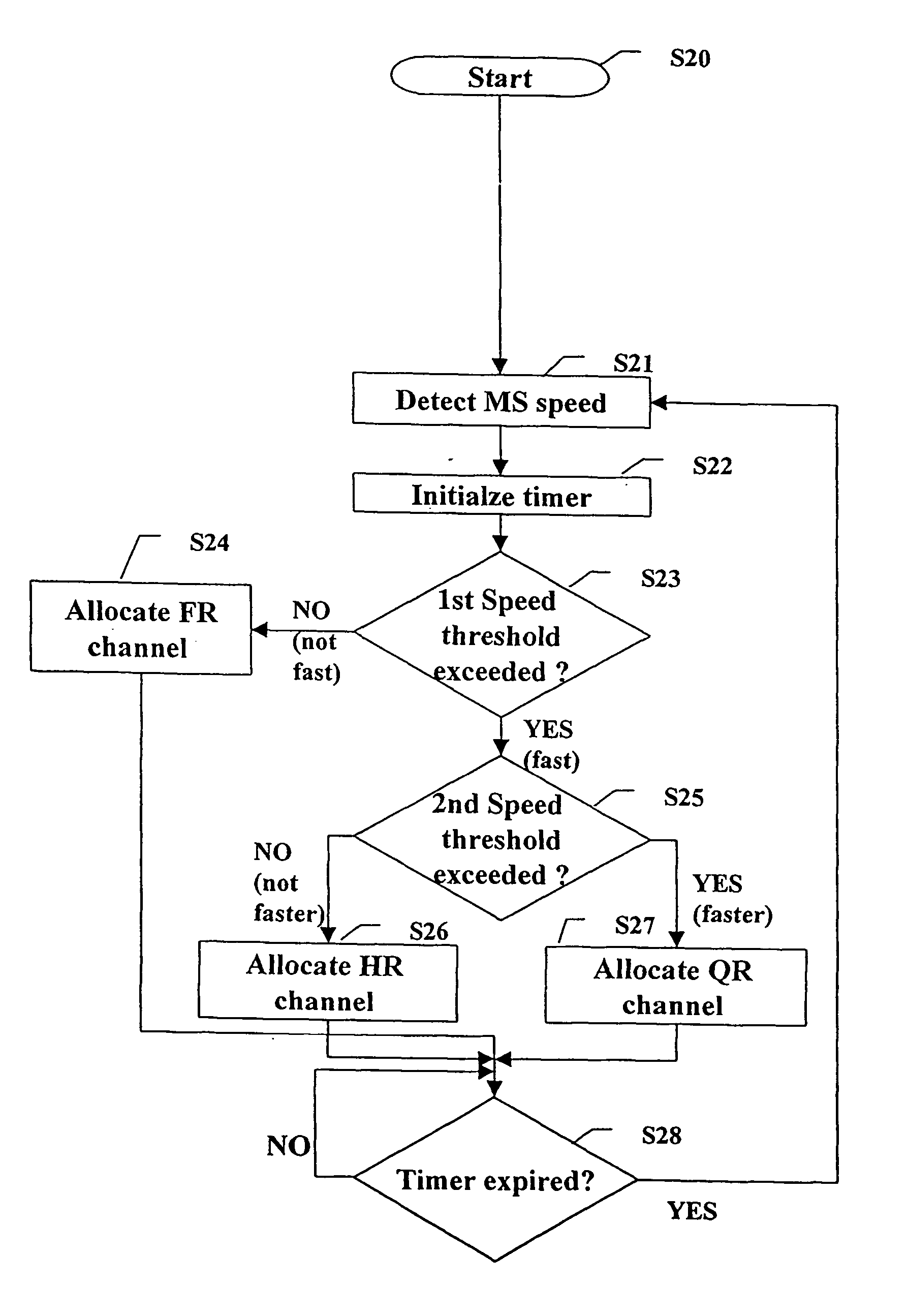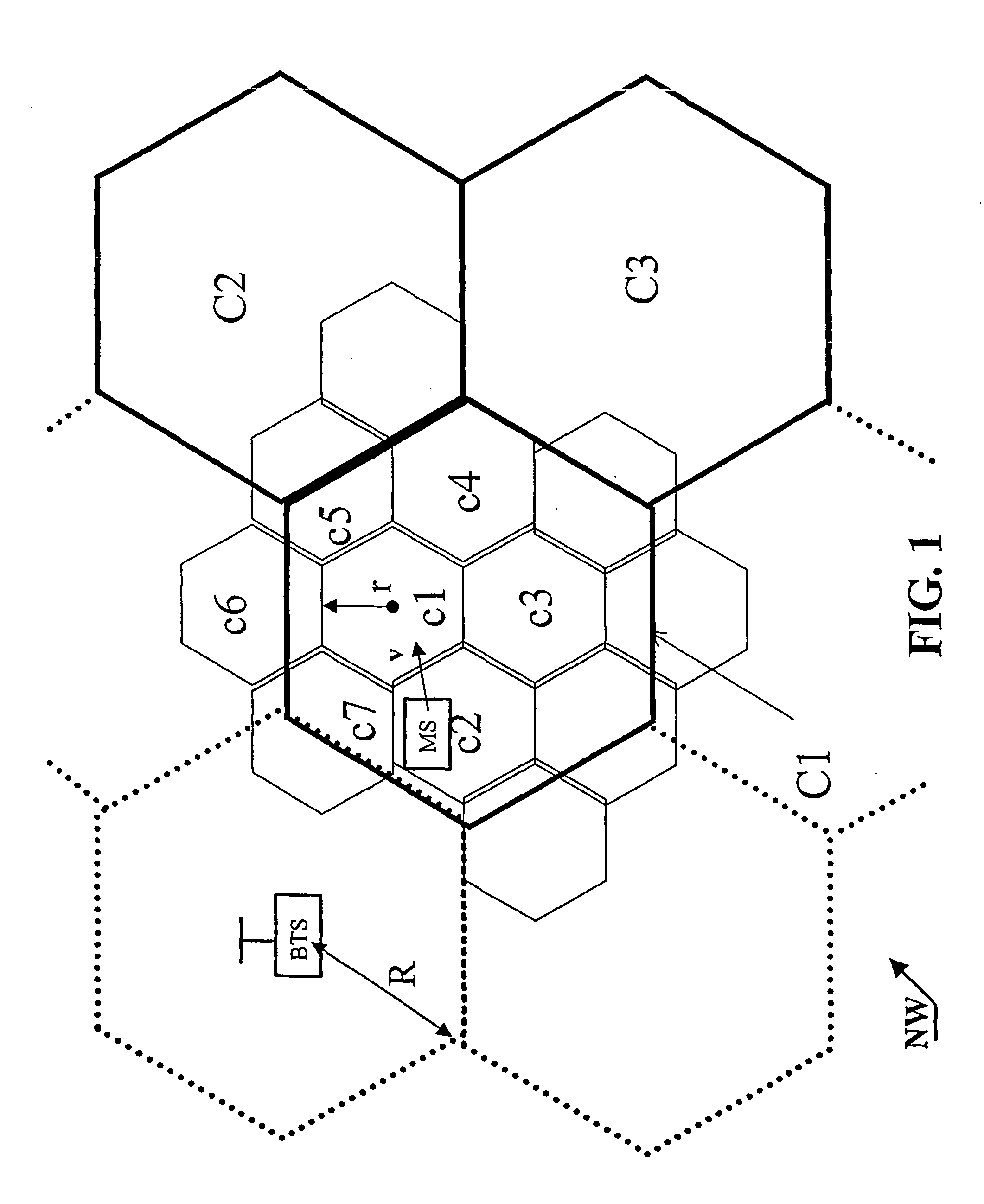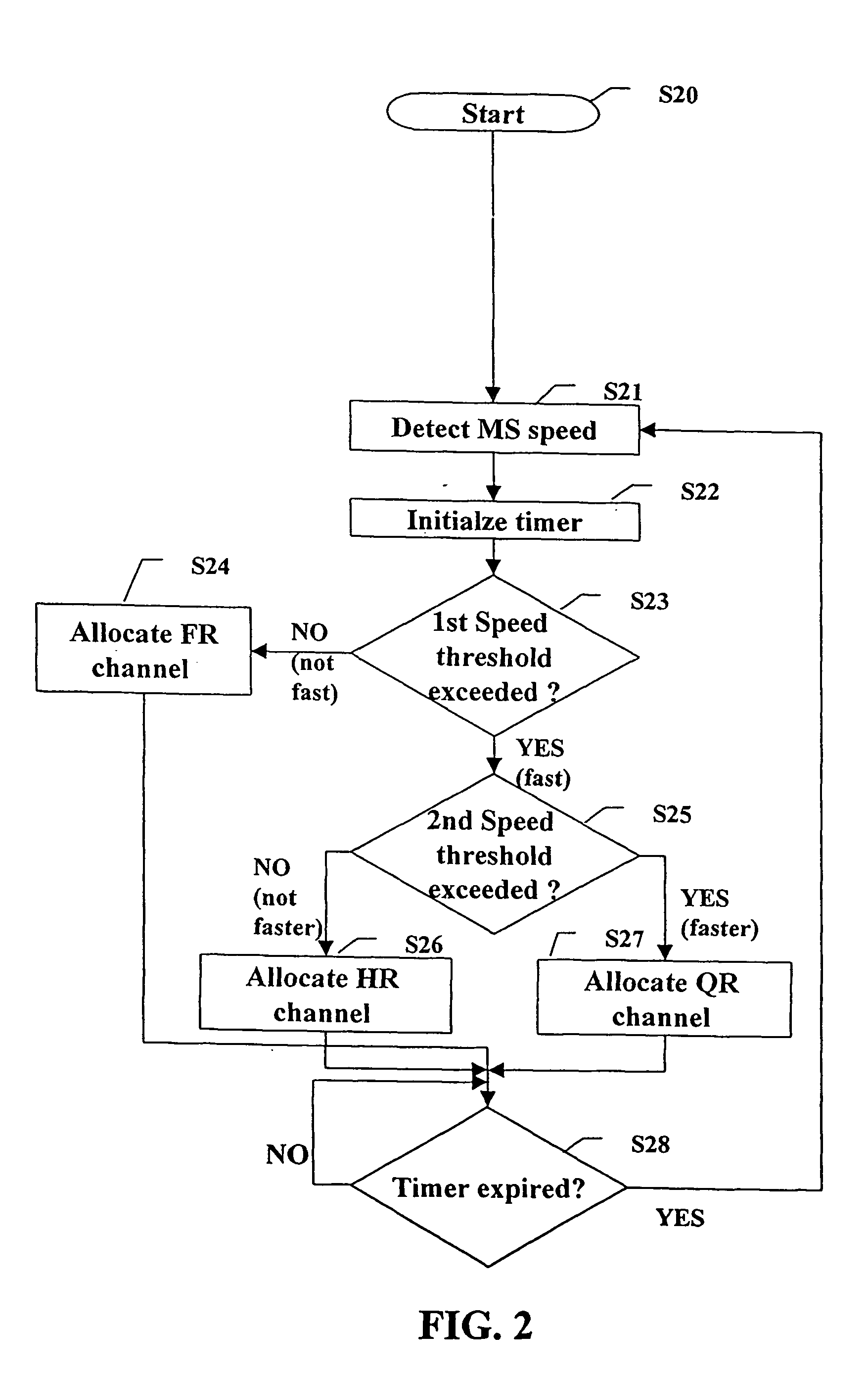Method of channel allocation for a mobile terminal moving in a cellular communication network
a mobile terminal and channel allocation technology, applied in the field of channel allocation for mobile terminals moving in cellular communication networks, can solve the problems of slow moving mobiles that may require frequent inter-cell handovers, inability to decode neighbor cell sch data, and inability to accurately predict the handover of neighbor cells, so as to reduce the number of neighbor cell sch decoding and signal level measurement, the effect of improving communication network performance in connection with handovers in cellular network layouts
- Summary
- Abstract
- Description
- Claims
- Application Information
AI Technical Summary
Benefits of technology
Problems solved by technology
Method used
Image
Examples
Embodiment Construction
[0066] The present invention will now be described in detail with reference to the accompanying drawings.
[0067] As stated above, for a mobile terminal MS moving in a cellular communication network NW, channel allocation is performed such that the speed v of said mobile terminal MS moving in said network is detected, and dependent on said detected speed v a channel of a specific type is allocated to said mobile terminal MS.
[0068] This means that in a cellular network, if the speed of the mobile terminal exceeds a specific speed threshold, moving mobile terminals are considered to be “fast” moving terminals and are assigned a half rate HR or quarter rate QR speech channel. Thus, the proportion of idle frames as compared to a full rate FR channel is increased. This will greatly increase the speed at which synchronization channel SCH data from neighboring cells (contained in 51-multiframes) can be decoded. This, in turn will reduce the minimum interval between successive inter-cell ha...
PUM
 Login to View More
Login to View More Abstract
Description
Claims
Application Information
 Login to View More
Login to View More - R&D
- Intellectual Property
- Life Sciences
- Materials
- Tech Scout
- Unparalleled Data Quality
- Higher Quality Content
- 60% Fewer Hallucinations
Browse by: Latest US Patents, China's latest patents, Technical Efficacy Thesaurus, Application Domain, Technology Topic, Popular Technical Reports.
© 2025 PatSnap. All rights reserved.Legal|Privacy policy|Modern Slavery Act Transparency Statement|Sitemap|About US| Contact US: help@patsnap.com



